The Aga Khan Trust for Culture is organizing an exhibition in Delhi that showcases the restoration of the 100-acre Qutb Shahi necropolis in Hyderabad.
- Fort Rd, Toli Chowki, Hyderabad, Telangana, 500008, India
- Visit
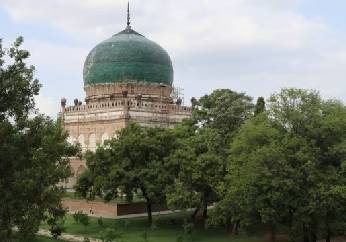
The Aga Khan Trust for Culture is organizing an exhibition in Delhi that showcases the restoration of the 100-acre Qutb Shahi necropolis in Hyderabad.
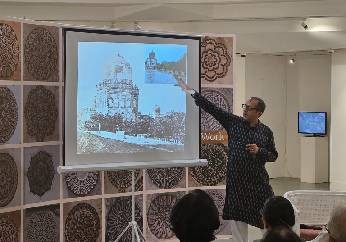
The conservation and landscape restoration effort at the Qutb Shahi Heritage Park in Hyderabad has been aided by an inter-disciplinary approach wherein engineers, architects, historians, conservation architects, landscape architects, material scientists, craftsmen, designers, archivists, horticulturists, among others, have worked together to bring in required expertise.
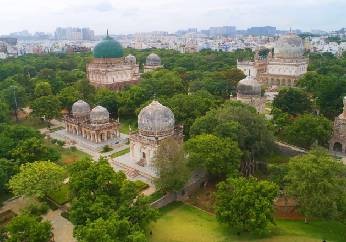
Hyderabad: When the 400-year-old tomb came to life with its green glazed dome squinting at the Hyderabad sun in June, Sita and Sohan Kumar Abhyar lunged for the phone. Not to click photos, but video call their teenage son far away in the Jhansi village.
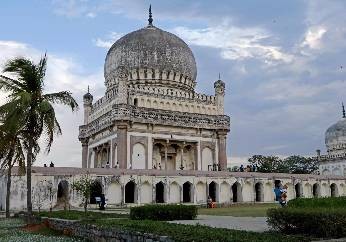
India International Centre’ presents a new exhibition, titled ‘Qutb Shahi Heritage Park: Conserving a Royal Necropolis. At the foot of Golconda Fort in Hyderabad, stands the 106-acre Qutb Shahi Heritage Park, a unique necropolis where for 169 years, the Qutb Shahi Sultans built mausoleums, funerary mosques, grand step-wells and garden structures. This, without a doubt, is the most significant ensemble of Qutb Shahi architecture.
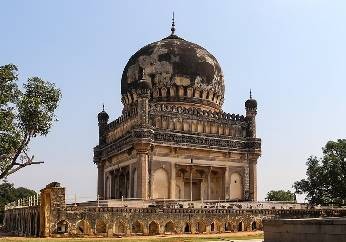
The term 'seven tombs' is misleading; the Qutb Shahi tombs are spread over 100 acres. The Aga Khan Foundation has been meticulously restoring the site, breathing new life into the ancient mausoleums.
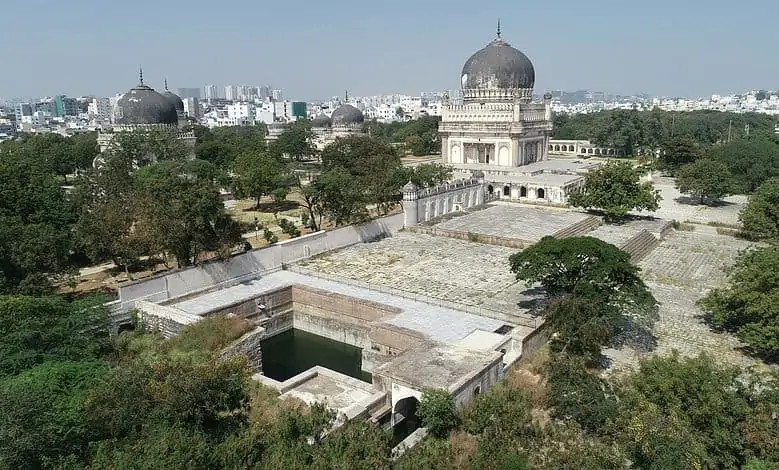
It was forty years ago when I first set foot in the Qutb Shahi Tombs, accompanied by the enthusiastic members of the Birdwatchers Society of Andhra Pradesh, now known as Deccan Birders. Led by Pushp Kumar, IFS, the then Chief Conservator of Forests of Andhra Pradesh.
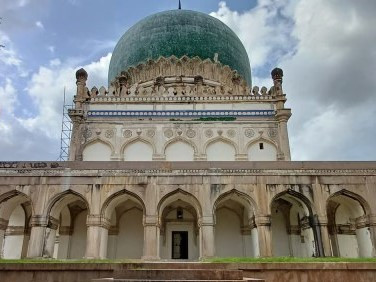
At three coss off from the town, there is a very fine mosque where there are the tombs of the Kings of Golconda and every day at 4 P.M. bread and pulao are given to all poor who present themselves. When you wish to see something really beautiful, you should go to see these tombs on the day of a festival, for then, from morning to evening, they are covered with rich carpets,” wrote French merchant and traveller Jean-Baptiste Tavernier three hundred years ago about the Qutb Shahi tombs, the royal necropolis of the Golconda dynasty.
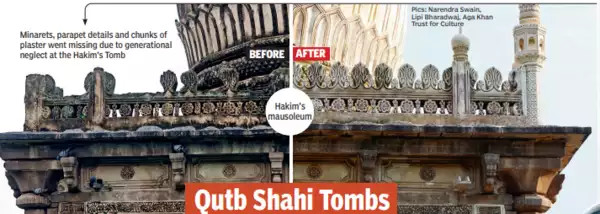
Under the azure sky, the city's architectural wonder, the Qutb Shahi Tombs, stands out in a different hue. Its real colours finally on display following a meticulous restoration project spearheaded by the Telangana department of heritage and the Aga Khan Trust for Culture (AKTC).
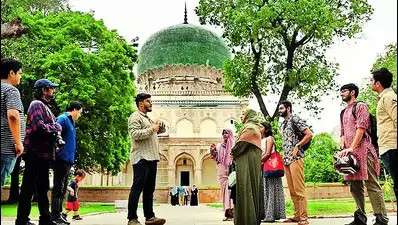
Deccan Archive organized a heritage walk at Hyderabad's Qutb Shahi tombs, highlighting restoration efforts by Heritage Telangana and the Aga Khan Trust for Culture. Focused on Sultan Muhammad Qutb Shah's mausoleum, the restoration replaced modern cement with traditional materials, revealing original glazed tiles and restoring ornamental details. Over 45 lakh liters water-holding stepwells were also restored.
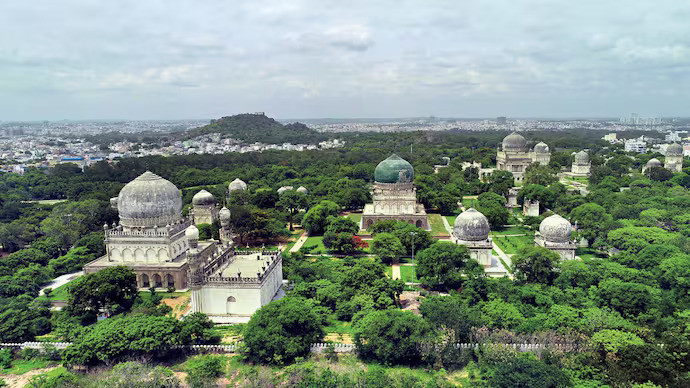
As the great Mughals ruled and shaped north India, there arose and fell in the region centred around Hyderabad the Qutb Shahi dynasty (1512-1687). Patrons of the arts and learning, the nucleus of their power was the Golconda Fort, and scattered around it they constructed, through patient accretion, one of the most remarkable set of buildings in the entire medieval world.Spread over 100 acres, the successive line of rulers shaped a complex of 40 mausoleums, 23 mosques, five baolis (stepwells) a hammam (bath), ornate pavilions and other garden structures.
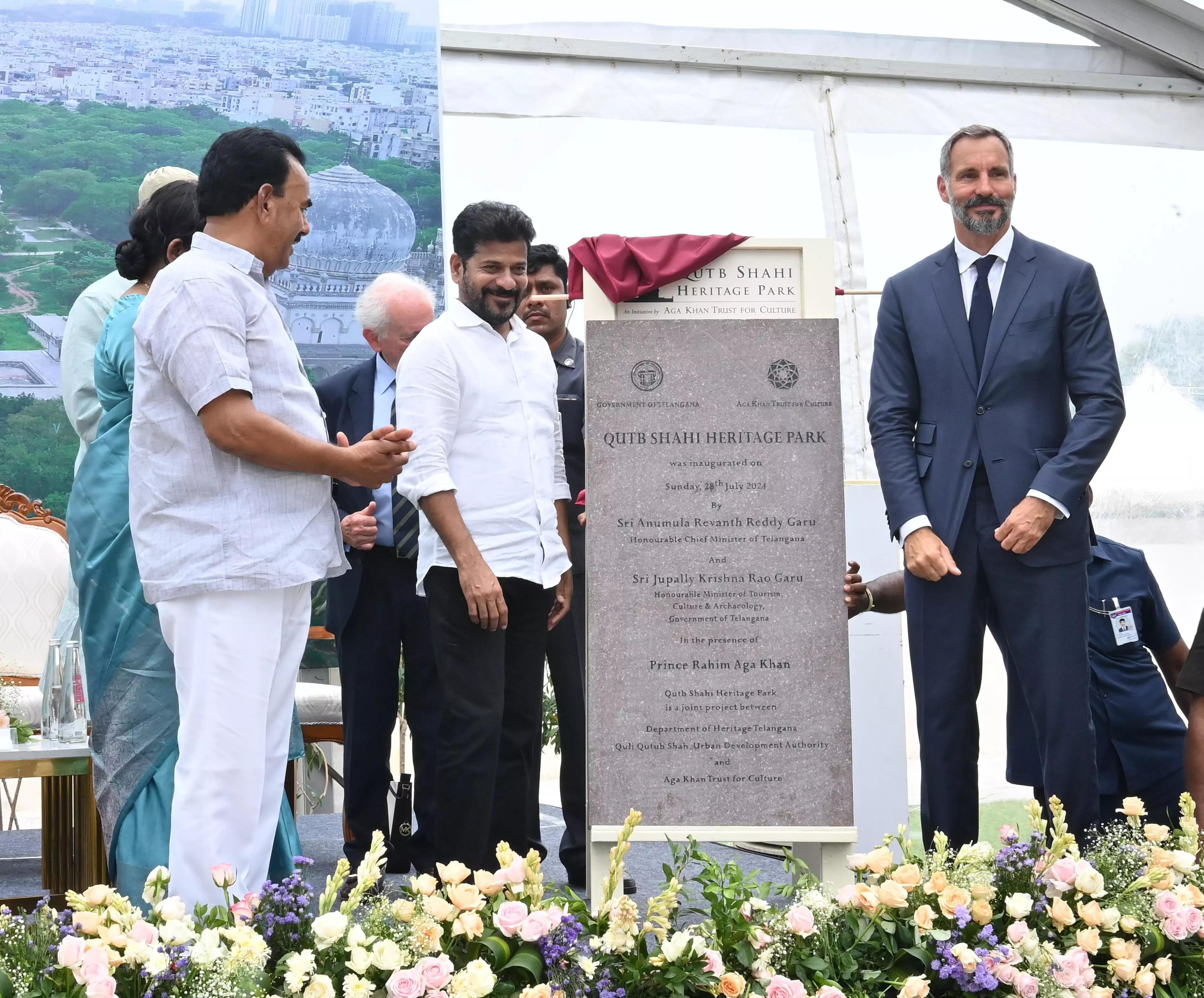
Telangana Chief Minister Revanth Reddy on Sunday inaugurated the Qutb Shahi Heritage Park in Hyderabad. Minister of Tourism, Culture and Archaeology Jupally Krishna Rao, Hyderabad MP Asaduddin Owasi and Prince Rahim Aga Khan were also present at the programme.
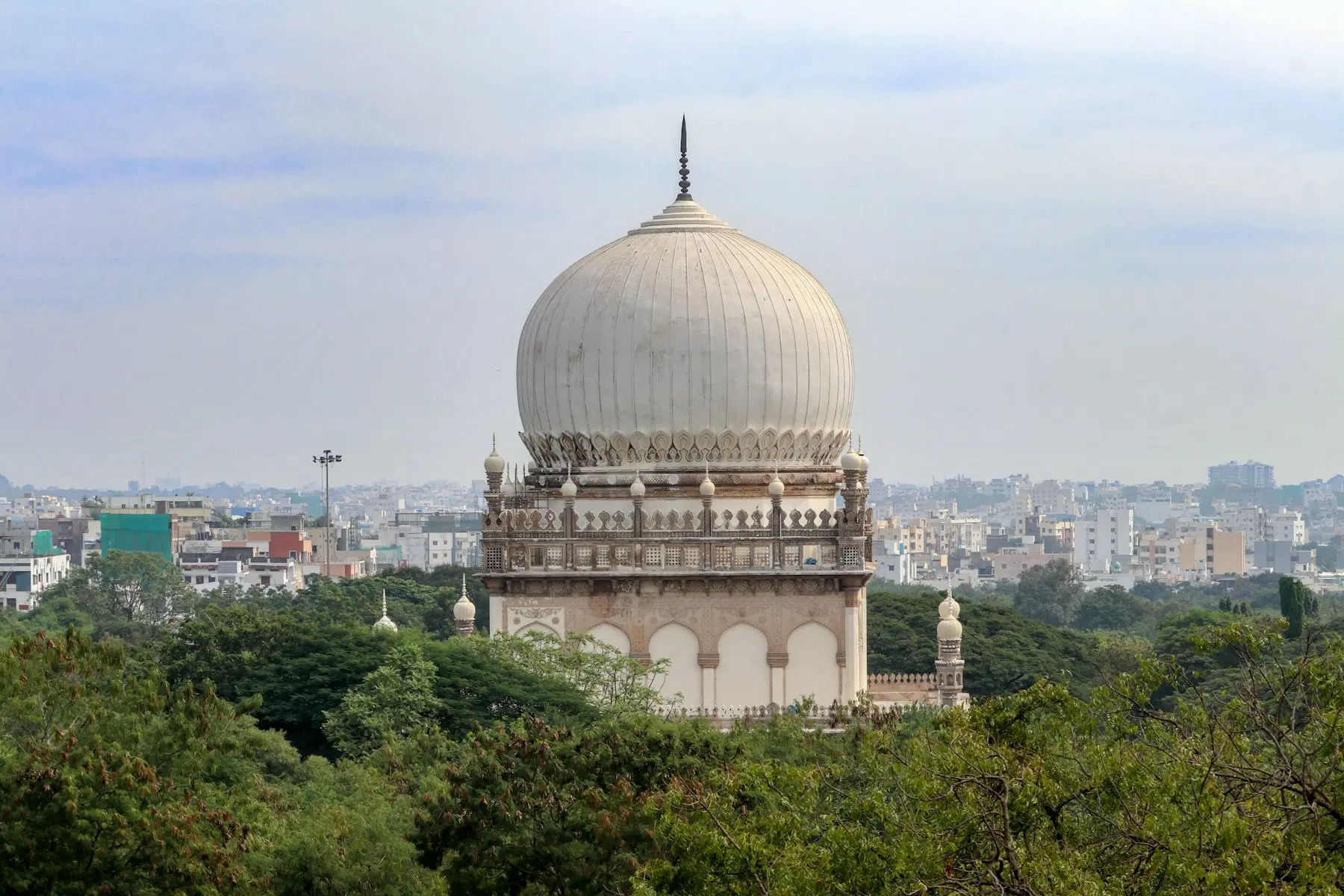
After more than a decade of dedicated conservation and landscape restoration efforts, the Qutb Shahi Heritage Park is now complete and was inaugurated today.Situated at the foot of the majestic Golconda Fort in Hyderabad, Telangana, the 106-acre park commemorates the Qutb Shahis, a Persianate Shia Islamic dynasty which ruled parts of southern India for 169 years during the 16th and 17th centuries.